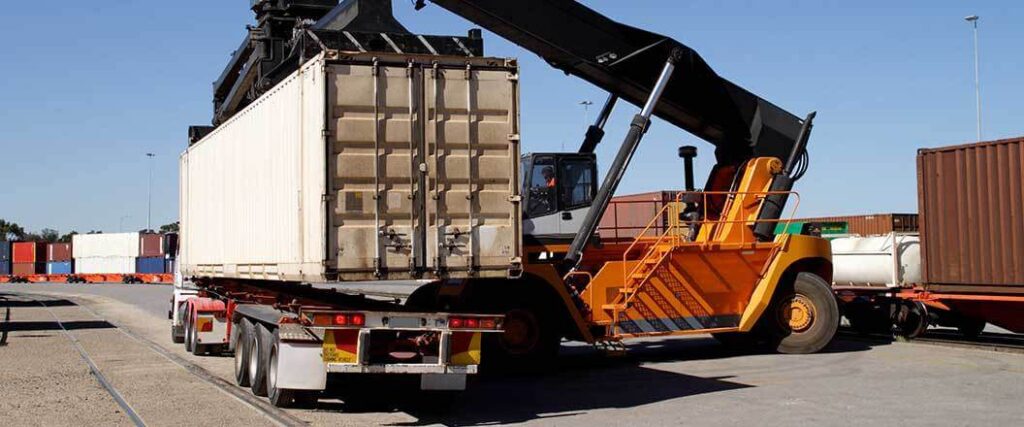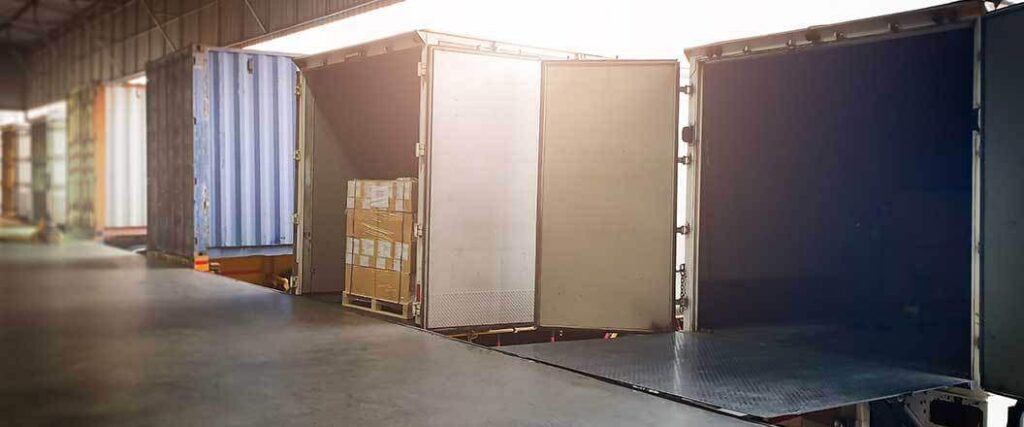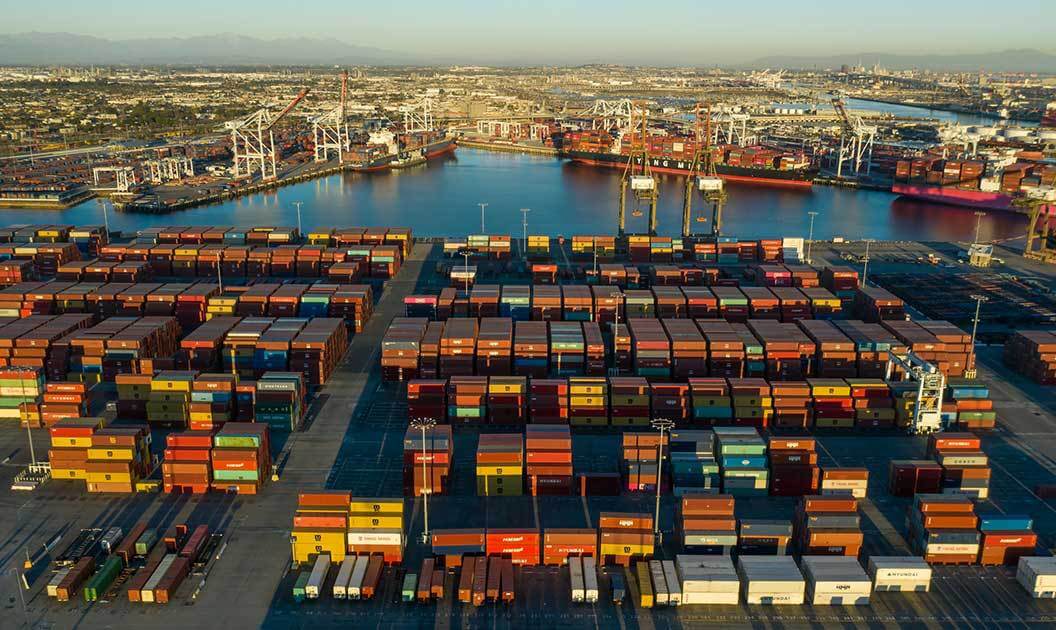When comparing transloading vs cross docking, it can be difficult to know which process offers the best services to suit your needs. Both transloading and cross docking provide services aimed at increasing efficiency and reducing costs along the supply chain, but each does so in different ways.
Transloading is the process of preparing, storing and transferring shipments between different modes of transportation using specialized facilities. Cross docking is the process of redirecting shipments and efficiently transferring cargo from inbound trucks to outbound trucks with minimal storage in between.
Each process is tailored to a particular type of shipment and comes with its own distinct advantages. Keep reading to learn whether transloading or cross docking offers the right services for you.

What is Transloading?
Transload services transfer inbound goods from one form of transportation to another for outbound delivery, with some processing in between. The transport vehicles that are used vary, but are always some combination of truck, rail, ship or cargo plane.
Transloading is most commonly used in two situation: One, when one form of transportation isn’t capable of getting the goods to their destination (i.e. international and overseas shipments). The other is when it would be cheaper or more efficient to move the goods via multiple modes of transport (i.e. combining rail and truck for cross-country shipment, rather than using a truck for the entire delivery).
Transloading facilities typically include some form of warehousing or storage option as well. Once goods come in through a port or railyard, they’re often transported to either an on-site distribution warehouse or to a transload facility nearby for storage and outbound delivery.
The consolidated cargo typically arrives at the transload facility in shipping containers and must be unloaded and processed before it’s ready for the next step of the journey. After unloading, the goods are sorted, palletized and shrink-wrapped before either being put into storage until needed, or transferred onto another mode of outbound transportation for delivery. This is often referred to as container transloading.
What are the Benefits of Transloading?
The transloading process comes with a number of distinct advantages for shippers needing to transport their goods through intermodal means. From providing companies storage throughout the shipping process, to reducing transport costs, eliminating barriers to delivery, and reducing port congestion, transloading is an excellent way to improve the process along the supply chain.
1. Storage Availability
Cargo shipped to a transload facility may not always be ready for delivery immediately upon arrival. Sometimes the goods require storage until they’re needed. This is especially true for international shipments that are stored stateside. Retailers are able to keep the goods in storage and ship them as needed, rather than having to wait for an overseas resupply for each shipment. This allows retailers to better manage their demand and order fulfillment.
2. Supply Chain Efficiency
Many transloading facilities have the on-site capability to not only store the cargo that comes in, but to break down, sort and palletize the shipments for storage and delivery. Additionally, some facilities offer value-added services like weighing and customs management. This helps speed up the delivery process by providing these services on-site, rather than having to ship the goods to a separate distribution facility.
3. Ability to Reach More Areas
Simply put, there are many shipments that would either be impossible or far more costly and less efficient if not for the ability to use multiple modes of transportation. In many cases, overseas shipments wouldn’t be possible. Domestic shipments would also require more time and money if a truck was the only way to move goods across the country. Transloading gives shippers the capability to combine multiple forms of transportation to best complete the job.
4. Reduced Transport Costs
Companies are able to save on transport costs by consolidating cargo that requires multiple shipping containers into one trailer. Rather than having to send multiple smaller shipments, goods can be consolidated into one trailer at the transloading facility for a more streamlined delivery process.
5. Clear Customs at Port
Some shipments that come into the U.S. from abroad aren’t able to clear customs in port and must be transported to the end-user in-bond. Transload shipments are able to clear customs at their port of entry, speeding up the delivery process and reducing costs.

What is Cross Docking?
Unlike transloading, cross docking involves little to no long-term storage and doesn’t require any unpacking or re-palletization. Instead, cross docking facilities rely on quick turnaround times to redirect goods for an efficient outbound delivery.
Due to the quick turnaround time and the number of parties involved, cross docking requires clear and constant communication between the carrier, shipper and third-party logistics (3PL) provider. Without clear communication between these parties, cross docking is unlikely to be successful.
What are the Benefits of Cross Docking?
From an efficiency and cost-savings standpoint, it’s difficult to find a better solution to transferring goods along your route than cross docking. Due to the process and the design of the facilities, cross docking can save you time and money, streamline the transportation process, and eliminate the need for storage altogether.
1. Time Savings
The purpose of cross docking is to create a more cost and time-efficient supply chain. Once goods arrive at a cross docking facility, they are unloaded and then either immediately loaded back onto an outbound vehicle for delivery, or set aside in a designated holding area until they can be moved - typically within the same day.
Unlike transloading, cross dock services involve goods that are already palletized and do not require any further unpacking or re-palletization. Instead, they are sorted onto the proper truck with a number of other shipments for delivery to the end-user, such as the retailer or customer. Because of its quick turnaround time, cross docking is also a good option for time-sensitive or perishable items.
2. Eliminates Need for Storage Space
Items shipped to a cross docking facility do not require long-term storage, which eliminates the need for expensive storage facilities and warehouse space. Goods that come into a cross docking facility are never kept for more than a day and instead are set aside in a staging area until they are ready to be moved onto an outbound vehicle.
3. Reduced Labor Costs
Unlike transloading, which often requires cargo to be unpacked, palletized and stored, cross docking simply involves unloading, sorting and transferring goods from one truck to another. As a result, labor costs are reduced.
4. Reduced Transport Costs
Cross docking facilities act as a junction for inbound and outbound cargo, allowing for the redirection of goods and the consolidation of shipments. Typically, it’s more efficient for a full truckload of cargo destined for multiple destinations to come into a central docking station where it can be split into multiple less than truckload (LTL) shipments. Those LTL shipments are then consolidated with other LTL shipments and sent out to each of their respective destinations.
5. Lower Risk of Theft and Damage
The less that goods are required to be handled and stored, the fewer opportunities there are for those goods to be stolen or damaged. By quickly processing cargo and limiting storage time, cross docking reduces the risks of theft and damage.

What's the Difference between Transloading and Cross Docking?
Transloading is used for intermodal transportation and for when you need to process and/or store goods before they can be properly transferred. International, overseas and cross-country shipments are best suited to take advantage of transload services.
Cross docking is used to redirect goods quickly and efficiently, without the need for storage or processing. Cross docking is best suited for cargo that requires a junction for multiple shipments and for shipments that require faster delivery - including time-sensitive and perishable goods.
Both transloading and cross docking offer services with the aim of reducing costs and increasing supply chain efficiency. Depending on the shipment, it may require both services to be used at different points along the supply chain. It all depends on how the goods are shipped, the origin and destination of the shipment, and the speed at which the shipment must be delivered.
Find the Services You Need with Transload Services USA
Now that you know the difference between transloading and cross docking, let R+L Global Logistics provide the right service for you. No matter how you need to ship, process, or store your inbound and outbound freight, we can provide the transload, cross dock and warehousing services you need.
In addition to transloading and cross docking services, we provide a full range of supply chain and fulfillment services. This includes:
Have questions or are ready to discuss your supply chain needs? Contact our team today at (352) 282-4588. Our supply chain experts are available to answer your questions, provide you with a hassle-free quote, and work with you to create an optimal supply chain and distribution strategy.

